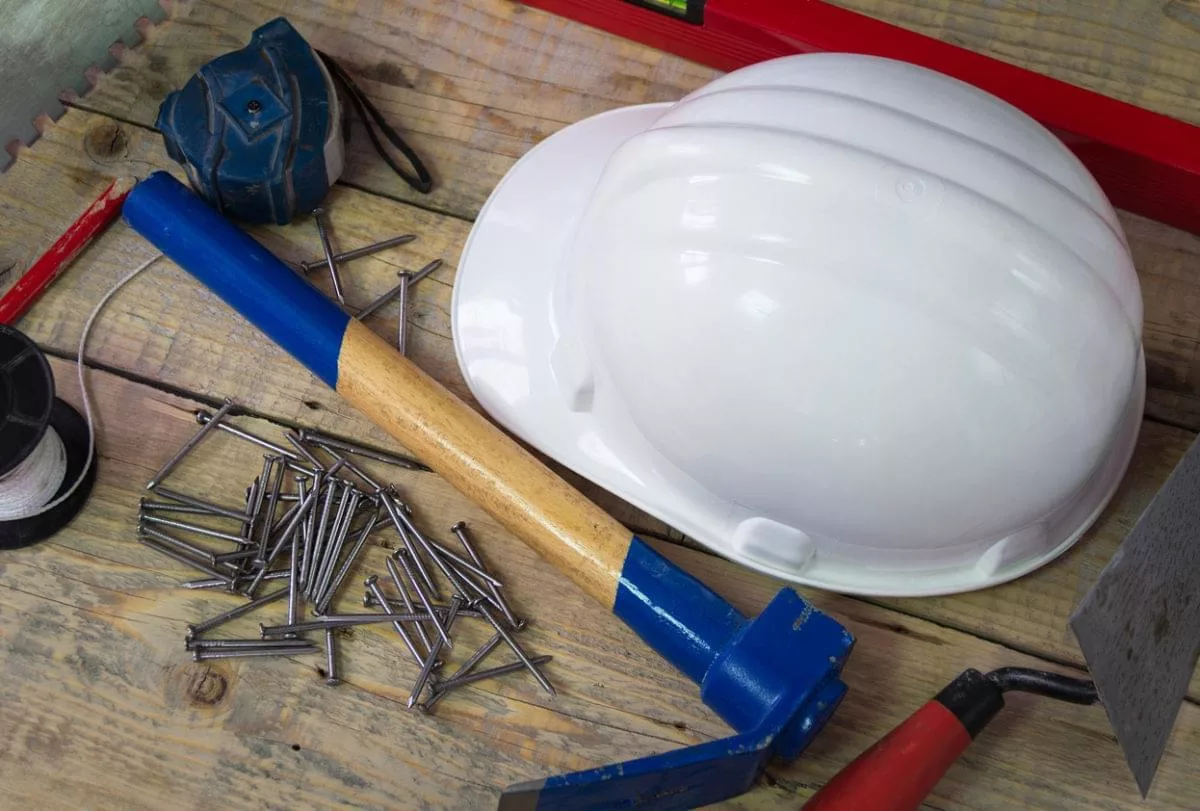
Prevent Wood Rust by Choosing the Best Nails for Outdoors
The occurrence of rust stain is not isolated to metals. In fact, you’ve probably seen rusty wood more times than you realize.
The unsuspected culprit? Nails that aren’t rust-proof.
The discoloration in the image below is more than likely something you’ve seen before. Structures built either by overzealous DIYers (you know who you are) or inexperienced contractors tend to be put together with the wrong type of nail for outdoor jobs. As a result, the rust can “drip,” and turn an otherwise beautiful custom exterior into an eyesore.
Let’s briefly take it back to high school science class.
In “wood rust” situations, the minerals in the metal of the nail are reacting with the minerals in the wood, creating corrosion that drips down the wood and causes pronounced rusty discoloration. Rust comes from metal in the presence of oxygen and water, as both must be present. Regular outdoor air is 21 percent oxygen and a varying percent of water, which we recognize as humidity. This science lesson has taught us that even air can make your cedar shingles rust.
And just like in science class, the next step is to determine why this mineral reaction has occurred. But we’ll go a step further and tell you how to avoid it because when it comes to building custom homes, wood rust is rarely a requested aesthetic.
What Causes Wood Rust?
Every natural wood contains minerals. When two dissimilar metals touch, such as with the nail, it creates accelerated corrosion. This reaction happens even faster when copper or steel are involved.
Water with a high metal content also can accelerate this corrosion rate. Metals like lead have been detected in rainwater, which means your home or other structure could be at risk of wood rust each time it rains.
How to Avoid Wood Rust
When you side a home or shed, you want the wood to maintain its beauty for years to come. Luckily, avoiding the mineral reaction that causes wood rust is easy–choose the right nail for the job.
Stainless steel nails are the best type to use for outdoor work to reduce the occurrence of wood rust.
However, stainless steel nails come in different grades. The higher the grade, the better–but we have also included other grades of stainless steel nails that will work well for your construction job.
GOOD GRADES OF STAINLESS STEEL NAILS
These nails will work, but fall on the lower end of the grading system. “Good” stainless steel nails include any run-of-the-mill nails from mainstream home improvement stores like Home Depot. We would classify these nails as made from a more “ambiguous” form of stainless steel.
These nails would be best for indoor use as they will not protect your outdoor wood from wood rust.
BETTER GRADES: STAINLESS STEEL TYPE 304
For “better” nails that will work well indoors, look for stainless steel type 304. This grade of nail is made with chromium and nickel, and while it offers a higher quality of protection from rust, it is only rust-resistant, not rust-proof.
304 type will work wonderfully indoors with natural wood, as it won’t be exposed to elements like rain, humidity, or moisture that promote corrosion and rust. If used outside, these nails will “bleed” as a result of that mineral reaction with the wood.
BEST GRADES: STAINLESS STEEL TYPE 316
For your indoor and outdoor projects, look for stainless steel type 316. This type of nail is made of chromium, nickel, and a polymer called molybdenum which makes it rust-proof.
A 316 type can be used underwater, on the ocean, in salt waters, on all boats, and in any natural wood outdoors. It is also a great finishing nail. You will not find this type of nail at your local Home Depot; but rather in a specialty home building store.
This type of nail is also now available for pneumatic nail guns, making it easy to use 316-type nails for all your wood and outdoor projects.
If you’re working on a framing project, look instead for Teflon-coated nails, as maintaining the aesthetic with a framing project is not your top concern.
Consider Your Environment
Given the varying types of weather and temperature across the country, the type of nail you choose depends on the type of environment in which you are building.
For example, when building in the Midwest, Teflon nails can be used because the weather is drier and more mild. However, if building in a climate like in Hawaii, a 316 type is essentially a requirement given the wetter, more humid weather.
If you haven’t considered the implications of using run-of-the-mill stainless steel nails for your outdoor construction projects, hopefully, you will now. Eliminating the occurrence of wood rust is not only simple to do, but will help maintain the aesthetic of your project for years to come.
So, will stainless steel nails rust?
Stainless steel is your best bet for avoiding rust, but it depends on the quality. Nails from your average home improvement store are very likely to rust if used outside. Nails made out of type 304 stainless steel are made with chromium and nickel and are only rust-resistant. The only rust-proof nails are made from type 316 stainless steel with the polymer molybdenum.
